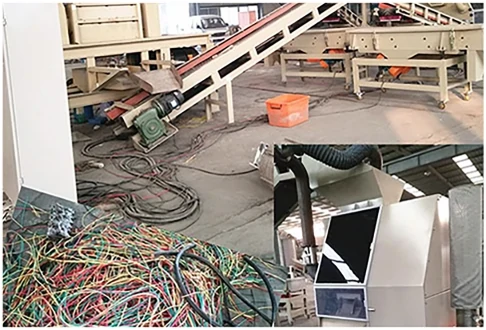Recycling electronic waste, or e-waste, is a critical environmental responsibility in our technology-driven world. As digital devices pervade every aspect of life, understanding how to dispose of them responsibly becomes essential. From old smartphones to outdated computers, e-waste recycling is not just about discarding; it’s about creating a sustainable cycle for materials that would otherwise pollute our planet.
Here’s a comprehensive guide on how to recycle electronic waste effectively.

First, recognize the importance of recycling e-waste. Electronic devices contain hazardous materials such as lead, mercury, cadmium, and brominated flame retardants. If not properly disposed of, these toxins can seep into the soil and water, posing severe health risks to humans and wildlife. However, when properly recycled, many components of e-waste can be repurposed, minimizing the environmental impact and conserving natural resources.
The recycling process begins with identifying items that qualify as e-waste. This includes any broken, obsolete, or unused electronic products—such as smartphones, tablets, laptops, televisions, and even kitchen appliances. Once identified, it’s important to collect and store these items safely until they can be transferred to a recycling facility. Always ensure sensitive data is wiped from devices to protect personal information before recycling.

Seek out certified e-waste recycling programs within your community. Many electronics manufacturers and retailers offer take-back programs, allowing consumers to return old devices for recycling. These programs are often convenient, free of charge, and operated by certified recyclers who adhere to strict environmental standards. Inquire about local e-waste collection events in your area, typically organized by municipalities or environmental organizations. Participation in such events ensures that your e-waste is processed responsibly.
For those heavily invested in technology, consider engaging with specialized e-waste recycling companies. These companies offer a more comprehensive approach by utilizing advanced technology to break down electronic components into reusable parts. Some even provide refurbishment services; restoring old electronics for reuse, thereby extending their lifecycle and reducing waste.
how do you recycle electronic waste
Understanding the various stages of the e-waste recycling process can enhance appreciation for these efforts. Initially, devices are sorted and manually dismantled, separating parts and materials for efficient processing. Metals such as copper, aluminum, and gold are extracted through melting and purification, while plastics and glass are repurposed through specialized treatments. This intricate process transforms potentially harmful waste into valuable raw materials, ready for manufacturing new products—completing a sustainable loop from old to new.
Furthermore, education is key in promoting widespread adoption of e-waste recycling practices. Raise awareness by engaging with educational campaigns that highlight the environmental impact and benefits of e-waste recycling. Institutions such as schools and community centers can play a pivotal role in disseminating this knowledge by integrating e-waste recycling into their programs for both students and the public.
Consider the economic benefits of e-waste recycling as well. Not only does it create job opportunities within the recycling industry, but it also reduces the need for mining raw materials. This reduction helps preserve ecosystems, decreases energy consumption, and mitigates the overall carbon footprint of manufacturing new electronics.
Finally, trust in certified recycling providers cannot be overstated. Partner with reliable organizations that have a proven track record and adhere to recognized standards like the R2 or e-Stewards certifications. These certifications ensure that e-waste is managed responsibly, maintaining environmental safety and compliance with regulations.
In conclusion, recycling electronic waste is more than a simple act of disposal; it is an integral part of the path towards environmental stewardship and sustainability. By educating oneself and participating in responsible recycling practices, individuals not only contribute to a cleaner planet but also advocate for an eco-conscious technological future. Remember, each recycled device is a step towards preserving our world for future generations.


